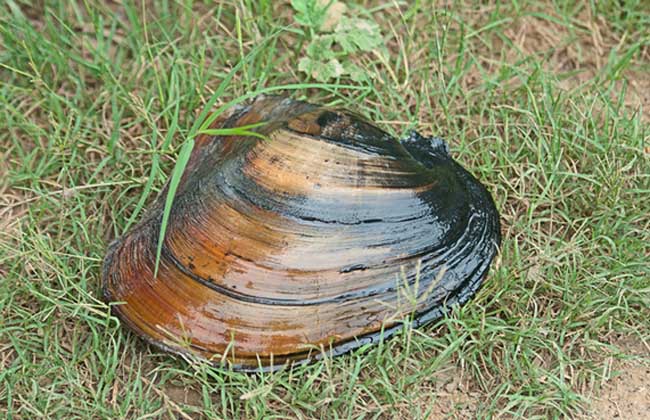在一些地方,河獭被称为蛤壳。它生活在淡水湖泊,池塘,河流,河流等的底部,并埋在沉积物中。身体后端的水管暴露,水可以流入外腔,完成粪便的进食,呼吸和排出。和代谢物,过滤微生物和水中的有机颗粒等功能,让我们来看看这条河的呼吸器官是什么!
河的呼吸器官</
河獭的呼吸器官是蟑螂。河蝎在外腔的胼call体两侧有两个襟翼,外嵴短于内叶。每个花瓣由两个内侧和外侧的小翼片组成,前后边缘和腹侧边缘愈合成“u”形,后边缘是上颞腔。小凸起由沿纵向排列的多个细丝组成,其表面具有纤毛,并且每个细丝具有间隔开的水平排列的细丝,并且细丝和丝间距之间的小孔称为岭。在两个小裂片之间有一个瓣膜空间,它将小裂片之间的骶腔分成许多称为瘘管的小管。丝隔膜和瓣膜间隔有血管分布,丝内有血管和几根质棒。当地幔和地幔上的纤毛振荡,引起水流,水通过进水孔进入套管腔,通过水孔进入水管,沿水管上升到上腔,流动向后,并通过出口管排出。当水通过坩埚时,进行气体交换,并且地幔膜还具有辅助呼吸的功能。

河里吃的是什么食物?
The foods of the river otter are mainly unicellular algae, protozoa and organic debris, such as rotifers, flagellates, greeneye worms, green granules, snails, nautical algae, dinoflagellates, tetragonium, spindle diatoms, rods. Star algae, crustacean debris and plant leaves. The main digestible is diatom. You can't actively chase food, relying on the opening and closing of the clam shell, the swing of the cilia and cilia on the inside of the mantle causes the water to flow, and the food enters the carcass with the water. The food enters the cavity with the water, the particles move up along the silk to the base of the tendon, and then move forward to the lip. After the lip is selected, the small particles enter the mouth, and the large particles move backward from the edge of the inner ridge. At the intersection, the mantle is traced to the back end, and the two shells are slammed out of the body. According to some statistics, the water that flows into the carcass every day can reach 40 liters.xx
在一些地方,河獭被称为蛤壳。它生活在淡水湖泊,池塘,河流,河流等的底部,并埋在沉积物中。身体后端的水管暴露,水可以流入外腔,完成粪便的进食,呼吸和排出。和代谢物,过滤微生物和水中的有机颗粒等功能,让我们来看看这条河的呼吸器官是什么!
河的呼吸器官</
河獭的呼吸器官是蟑螂。河蝎在外腔的胼call体两侧有两个襟翼,外嵴短于内叶。每个花瓣由两个内侧和外侧的小翼片组成,前后边缘和腹侧边缘愈合成“u”形,后边缘是上颞腔。小凸起由沿纵向排列的多个细丝组成,其表面具有纤毛,并且每个细丝具有间隔开的水平排列的细丝,并且细丝和丝间距之间的小孔称为岭。在两个小裂片之间有一个瓣膜空间,它将小裂片之间的骶腔分成许多称为瘘管的小管。丝隔膜和瓣膜间隔有血管分布,丝内有血管和几根质棒。当地幔和地幔上的纤毛振荡,引起水流,水通过进水孔进入套管腔,通过水孔进入水管,沿水管上升到上腔,流动向后,并通过出口管排出。当水通过坩埚时,进行气体交换,并且地幔膜还具有辅助呼吸的功能。

河里吃的是什么食物?
The foods of the river otter are mainly unicellular algae, protozoa and organic debris, such as rotifers, flagellates, greeneye worms, green granules, snails, nautical algae, dinoflagellates, tetragonium, spindle diatoms, rods. Star algae, crustacean debris and plant leaves. The main digestible is diatom. You can't actively chase food, relying on the opening and closing of the clam shell, the swing of the cilia and cilia on the inside of the mantle causes the water to flow, and the food enters the carcass with the water. The food enters the cavity with the water, the particles move up along the silk to the base of the tendon, and then move forward to the lip. After the lip is selected, the small particles enter the mouth, and the large particles move backward from the edge of the inner ridge. At the intersection, the mantle is traced to the back end, and the two shells are slammed out of the body. According to some statistics, the water that flows into the carcass every day can reach 40 liters.xx







